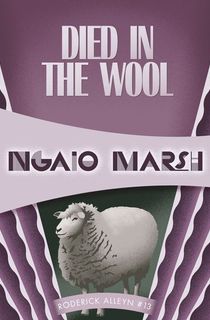The Golden Age of British Detective Fiction was—like the country that spawned it—a monarchy. It was ruled not by a king, but by a quartet of Queens of Crime—Agatha Christie, Dorothy L Sayers, Margery Allingham, and Ngaio Marsh.
The Queens of Crime
The Four Queens of Crime were enthroned during the inter-War years. They helped define the mystery genre, drew up the blue-print of plot twists and red herrings, and created the archetypal detectives from bon viveur aristocrats to silver-haired spinsters.
If Edgar Allen Poe invented detective fiction, the Queens of Crime refined it, packaged it, and sold it to a mass worldwide audience. They are to crime writing what The Beatles are to pop music—mystery fiction’s Fab Four.
Agatha Christie
.png?w=32)
photo of Agatha Christie
Photo Credit: Wikimedia Commons ImagesEven in an assembly of monarchs, there has to be one who stands above the others and when it comes to the Queens of Crime that is undoubtedly Agatha Christie. Her novels have sold more copies, been translated into more languages, and spawned more TV shows and films than her three fellow rulers put together.
Dame Agatha lived the life of one of her country house characters. Her parents were well-to-do country gentry. As a girl, Christie’s world was a social whirl of amateur theatricals, parties, fox hunts, dances, and musical evenings. Work was never on the horizon for Agatha, but she enjoyed writing and, after a couple of false starts, penned The Mysterious Affair at Styles in 1916. The mystery, which introduces Hercule Poirot to the world, took a while to find a home but was eventually published in 1920.
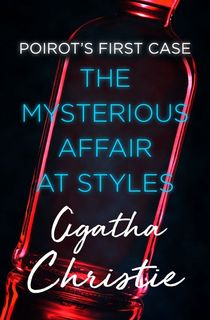
The Mysterious Affair at Styles
Dame Agatha’s other great detective Miss Jane Marple would take her bow in a series of short stories before her full-length debut in The Murder at the Vicarage in 1927.
By then Agatha Christie was internationally famous, less because of her fiction than through her infamous ten-day disappearance that provoked a nationwide manhunt in Britain and garnered newspaper headlines all over the globe. The incident—possibly a breakdown brought on by the death of her mother and the news that her husband was leaving her for another woman—reshaped Christie’s life as well as propelled her (unwittingly) into the world of celebrity.

The Murder at the Vicarage

Murder in Mesopotamia
Remarriage to a young archaeologist stabilized Christie’s life and the couple’s travels gave her plenty of exotic locations for novels such as Death on the Nile and Murder in Mesopotamia.
These days, Christie is viewed as the inventor of cozy crime, with its rural settings, middle-class characters, sanitized violence (poison is Christie’s preferred murder weapon) and the inevitable denouement with all the suspects gathered together in the conservatory. But while her most famous works certainly fit that mold, Christie was also an innovator, and novels like And Then There Were None and The Murder of Roger Ackroyd revolutionized mystery fiction.

Death on the Nile

And Then There Were None
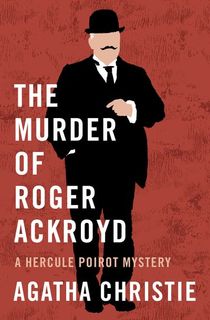
The Murder of Roger Ackroyd
Dorothy L. Sayers

photo of Dorothy L. Sayers
Photo Credit: Wikimedia Commons ImagesIf Dame Agatha appeared as the embodiment of the country gentlewoman, living in a world of chintz furnishings and cream teas, then Dorothy L Sayers—creator of the intelligent but foppish, Lord Peter Wimsey, witty author, Harriet Vane, and traveling salesman turned sleuth, Montague Egg—was the bluestocking of the royal household.
The only child of a vicar and schoolmaster, Sayers learned Latin at the age of six and got a first-class degree in Modern Languages and Medieval Literature from Oxford University (her experiences at Somerville College would form the background for her superb Lord Wimsey mystery novel Gaudy Night).
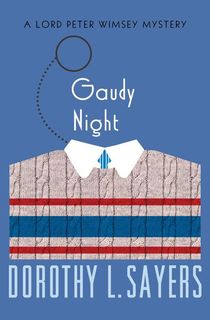
Gaudy Night
Sayers would publish volumes of poetry as a teenager and produce a respected translation of Dante’s Divine Comedy. Her crime writing career began in 1923 with the first Wimsey novel, Whose Body?
After leaving Oxford, Sayers became a copywriter at a London advertising agency, S.H Benson. Gifted with rhymes and wordplay, she wrote a series of famous posters for Guinness before finally being able to take up writing full-time. Her experiences in Benson’s offices would form the backdrop for Murder Must Advertise.
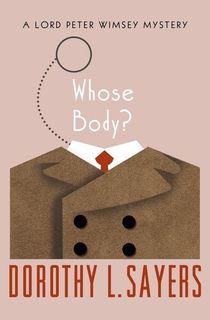
Whose Body?

Murder Must Advertise
Sayer’s private life had a Bohemian edge that might have formed a neat plotline for Dame Agatha. She had a passionate (though unconsummated) affair with John Cournos, a Jewish Russian poet who believed in free love (he’d turn up in fictional form as Philip Boyes in the novel Strong Poison), got pregnant by a car salesman who turned out to be married, and then went to live with his wife who helped her give birth to the child in secret (see what I mean about an Agatha Christie plotline?). Later she married a divorced army officer, Mac Fleming, and things calmed down a little.
A gifted stylist, with a sharp edge, and a taste for social satire, Sayers was regarded during her lifetime as the greatest of all mystery writers. Her Lord Peter Wimsey novel The Nine Tailors, featuring a troupe of bell-ringers in the East Anglia, is arguably her best work.
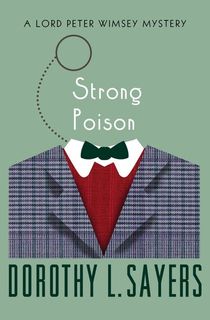
Strong Poison
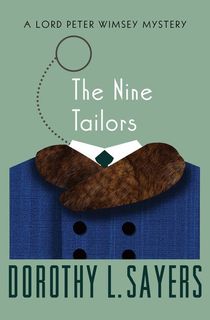
The Nine Tailors
In 1937 Sayers wrote her final mystery novel, Busman’s Honeymoon, and then—without explanation—abandoned crime writing and focused instead on writing plays and essays on religious subjects.
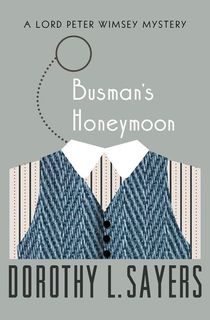
Busman's Honeymoon
Margery Allingham

photo of Margery Allingham
Photo Credit: Wikimedia Commons ImagesWhile Sayers shared both a background and a bond with tweedy Oxford-educated intellectual authors such as C.S Lewis and J.R.R Tolkien, Margery Allingham came from quite a different literary tradition. Both her parents were writers. But they were no Bloomsbury set aesthetes. Her father Herbert knocked out pulp fiction (including dozens of stories featuring detective Sexton Blake) while her mother Emmie contributed tales of romance to women’s magazines. The Allinghams had no pretensions—to them, writing was a trade. It was an attitude their daughter embraced.
Allingham earned her first fee aged just eight and published her debut novel—an occult story about smugglers—when she was nineteen. Busily filing short stories to British magazines, she struggled to find time to write another full-length novel. Eventually, the chance came during the two-week honeymoon that followed her marriage to artist Philip Youngman Carter. The result was The Crime at Black Dudley featuring the character who would become the main focus of her work, Scotland Yard detective, Albert Campion.

The Crime at Black Dudley
At first, Campion is a lightweight and silly figure—possibly because he’s a parody of Lord Peter Wimsey. Allingham evidently had no great plans for him, but her US publishers took to the blue-blooded dimwit and urged her to keep him for her second crime novel. With her eye on the lucrative American market, Allingham did just that in Mystery Mile and also threw in a plot line featuring a US judge hiding from gangsters at the English seaside for good measure.
Campion, like the author, would change and grow as the years passed and he fell in love, married, and had a child. By his final appearance in Cargo of Eagles (completed by Philip Youngman Carter after Allingham’s untimely death from breast cancer in 1966) he is unrecognizable from the foolish young fellow we first meet in 1927.

Mystery Mile

Cargo of Eagles
Allingham was good-humored and light-hearted but had a keen understanding of human relationships. Her early Campion novels are straightforward well-constructed whodunits, but later she’d produce work riddled with black comedy (The Case of the Late Pig) or filled with dark psychological undertones such as The Fashion in Shrouds. Her masterpiece The Tiger in the Smoke is a razor-sharp thriller featuring a sociopathic serial killer. It is as far removed from the cozy crime of the Home Counties conservatory as you can get.
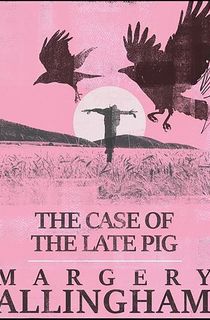
The Case of the Late Pig
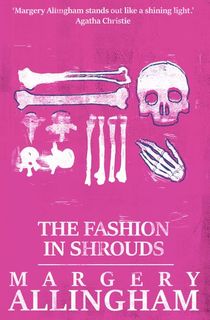
The Fashion in Shrouds

The Tiger in the Smoke
Ngaio Marsh

photo of Ngaio Marsh
Photo Credit: Wikimedia Commons ImagesAnd finally, there’s the late arrival, the outsider, and the late developer. Ngaio Marsh was born and educated in New Zealand. While the other Queens of Crime set their sights on literary careers in their teens, the New Zealand-born Marsh came to writing late. An art student, she worked as a painter, had a successful career as a stage actress, and was running a hip home furnishings store in London’s Knightsbridge when she penned her first mystery novel A Man Lay Dead. It was a classic country house murder that introduced her aristocratic police detective, Roderick Alleyne.

A Man Lay Dead
A Man Lay Dead as published in 1934, by which time Marsh was nearly 40 years of age. Though she carried on working in the theatre as a director, she was soon devoting most of her time to writing Roderick Alleyne mysteries. Many draw on her theatrical background (Opening Night, Death at the Dolphin, and her final Alleyne novel Light Thickens), while others have the art world as a backdrop including Artists in Crime and the novel that is arguably her masterpiece Clutch of Constables, a tautly plotted whodunit set on a cruise boat in the Norfolk Broads.
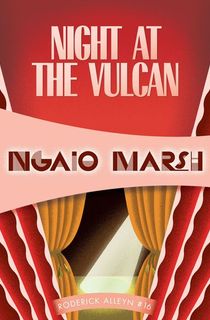
Night at the Vulcan

Killer Dolphin

Light Thickens

Clutch of Constables
Perhaps most interesting though are the two novels written during World War Two in which Alleyne is sent to New Zealand by British military intelligence. Colour Scheme and Died in the Wool have beautifully evoked settings and the former is rare amongst Golden Age mystery novels in addressing some of the crimes of the British Empire, in this case, those perpetrated on the Maoris. The late-blooming Marsh would outlive all the other Queens of Crime. She died in 1982.
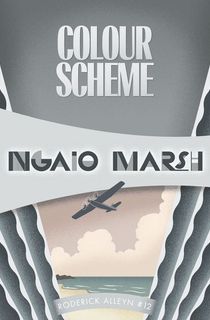
Colour Scheme
